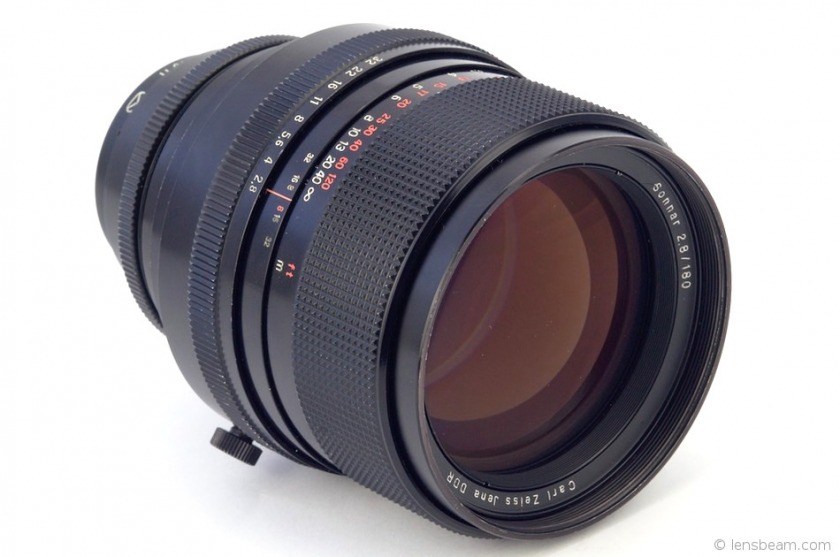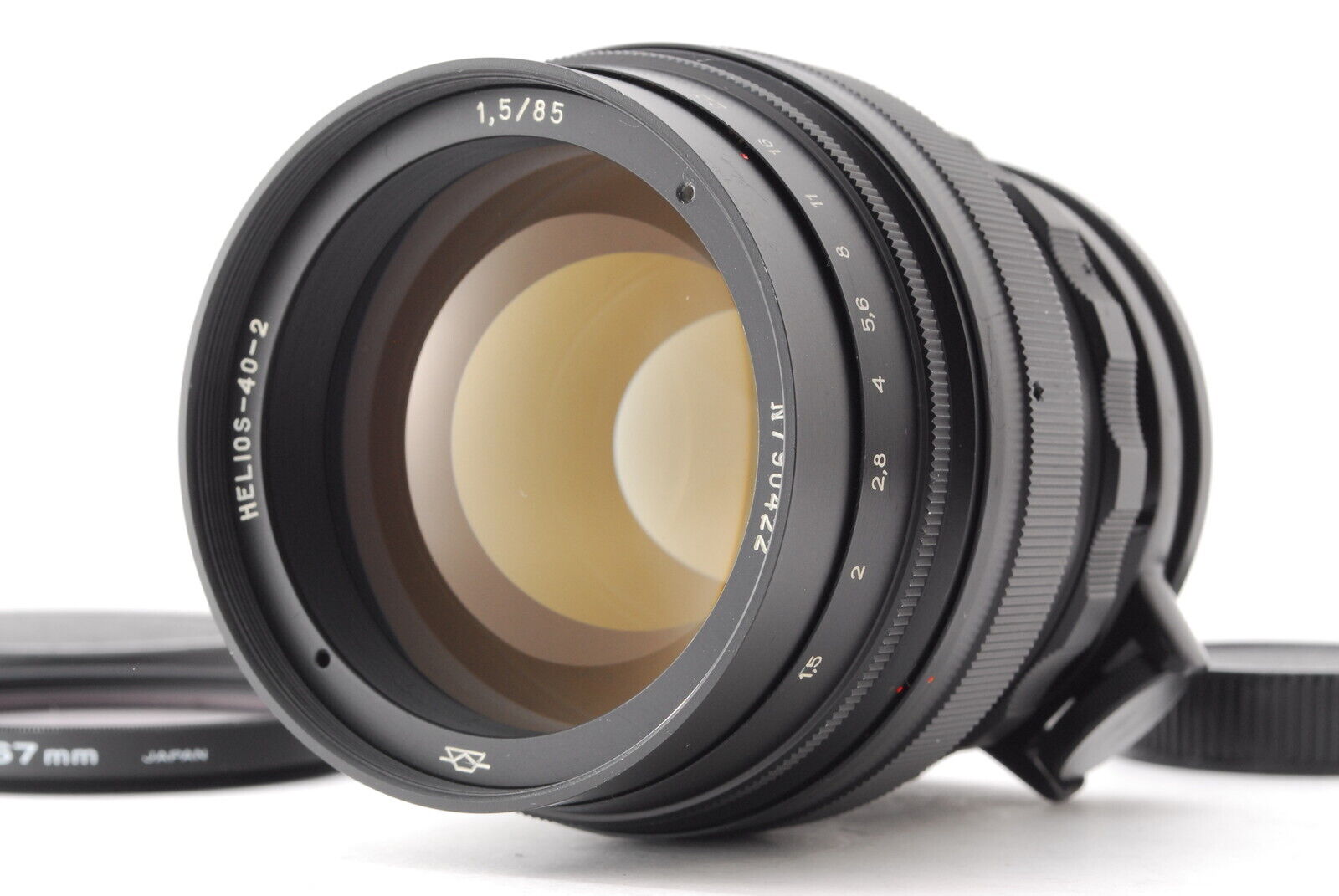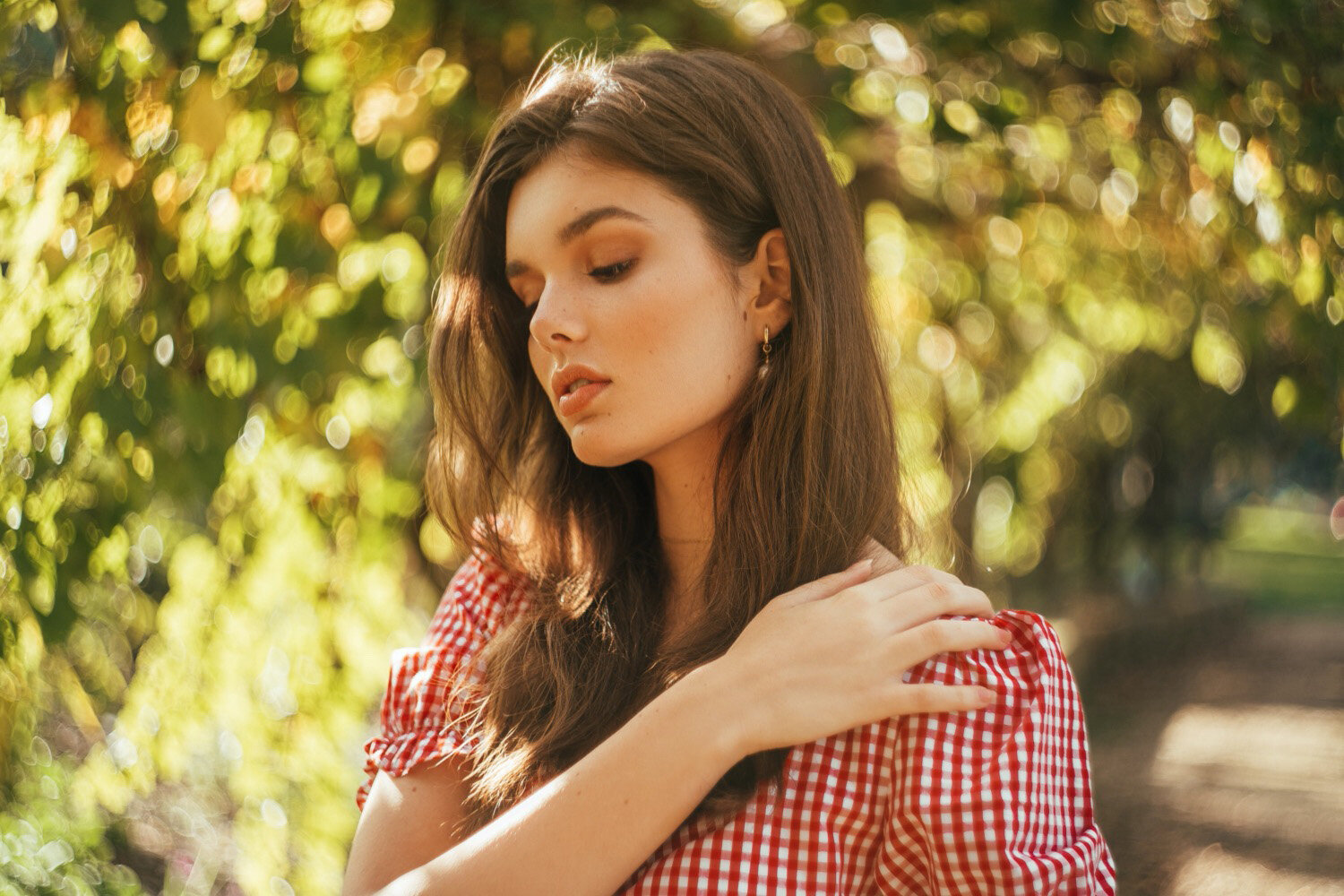Best Vintage Portrait Lenses
Portrait photography requires a lens that can faithfully capture the essence of the subject.
A great portrait gives us a glimpse of something that lies beneath the surface. A great portrait teases the viewer, it does not simply create a likeness.
Incredibly sharp lenses and those that do well in lab tests are great for lab tests. Or if you have some really important documents to photograph…
These things are static and lifeless, portraits are not, which is why you need a lens with as much character as your subjects.
Enter, vintage lenses.
With a unique blend of sharpness, contrast, colour rendition, and bokeh, vintage lenses can often offer that magical touch that your portraits need.
In this article, we explore some of the best vintage portrait lenses known for their character and optical qualities. Note that to adapt these vintage lenses to modern cameras, you will need the appropriate adapters.
1. Carl Zeiss Jena Sonnar 180mm f/2.8
The Carl Zeiss Jena Sonnar 180mm f/2.8 is a lens that carries not just an optical formula but a legacy. Known for its exquisite craftsmanship and optical precision, this lens from the venerable Carl Zeiss lineage is more than a tool; it’s a piece of photographic history.

Build and Design: First and foremost, the build quality of the Sonnar 180mm f/2.8 is nothing short of what you’d expect from a Carl Zeiss product. The lens, predominantly metal, feels robust and durable in hand, a testament to the engineering standards of its time. Its design, though vintage, carries a timeless appeal, ensuring that it stands out in any photographer’s kit.
Optical Performance: The true magic of this lens, however, lies in its optical performance. The Sonnar design is renowned for its ability to render images with exceptional sharpness, contrast, and bokeh, and this 180mm f/2.8 variant is no exception. The lens exhibits a unique rendering of images, with a signature bokeh that many photographers find appealing for portrait work.
At f/2.8, the lens offers excellent light-gathering capability, making it a solid choice for low-light scenarios. The depth of field at this aperture is razor-thin, providing an artistic tool for isolating subjects and creating compelling compositions.
Colour and Contrast: Zeiss lenses are celebrated for their colour rendition and contrast, and the Sonnar 180mm f/2.8 upholds this reputation. Images captured with this lens exhibit rich, vivid colours and high contrast, bringing life to every frame.
Handling and Usability: Despite its solid build, the lens is relatively compact for its focal length and aperture, making it a manageable addition to a photographer’s gear. However, users should note that this is a manual focus lens, which may present a learning curve for those accustomed to autofocus systems. That said, the tactile experience of manually focusing a lens like this is often considered a rewarding aspect of the photographic process.
2. Helios 40-2 85mm f/1.5
The Helios 40-2 85mm f/1.5 is a lens that stands out in the crowd, not just for its substantial build and unique visual characteristics but also for its place in the history of photography. Originating from Russia, this lens is often sought after by photographers aiming to achieve a distinctive look and feel in their images.

Build and Design: The Helios 40-2 is robust, featuring a solid metal construction that harks back to an era where durability was a priority in lens design. Its weight and size are significant, but these aspects contribute to the overall feeling of using a piece of equipment built to last. The design, with its vintage appeal, is a nod to its heritage and appeals to those who appreciate the aesthetics of classic photography gear.
Optical Performance: What sets the Helios 40-2 apart is its unique optical character. The lens is renowned for its ‘swirly bokeh,’ a distinct effect that creates a swirling, dreamlike background, which gives portraits a unique, almost ethereal quality. This effect is most pronounced when shooting wide open at f/1.5 and gradually diminishes as you stop down the aperture.
The lens’s maximum aperture of f/1.5 is not just about the bokeh; it allows for shooting in low-light conditions, providing versatility and creative freedom. At wide apertures, sharpness is concentrated in the centre of the frame, making it ideal for portrait photography where the subject is centrally placed.
Colour and Contrast: The Helios 40-2 renders colours with a warm, nostalgic feel, often reminiscent of the classic film era. Contrast is moderate, ensuring that images have a soft, pleasing quality without the harshness that modern lenses can sometimes impart.
Handling and Usability: The manual focus ring on the Helios 40-2 is smooth, allowing for precise control over focus. However, users accustomed to the speed and convenience of autofocus may need time to adapt to the manual focusing process. The lens’s significant weight also means that it’s best used with a tripod or a sturdy support, especially when shooting at slower shutter speeds.
3. Canon FD 85mm f/1.2L
The Canon FD 85mm f/1.2L lens is a remarkable piece of optical engineering, renowned for its performance and the ethereal quality it can bring to images. As part of Canon’s prestigious ‘L’ series, it is a lens that carries the legacy of excellence, embodying professional quality and outstanding craftsmanship.

Build and Design: The lens boasts a solid construction, typical of Canon’s ‘L’ series, designed to withstand the rigors of professional use. The build quality is exceptional, with a metal body and a substantial, reassuring weight, reflecting its premium status. Its design is sleek and functional, exuding a sense of timeless elegance that appeals to professional photographers and enthusiasts alike.
Optical Performance: The Canon FD 85mm f/1.2L is a lens celebrated for its wide aperture of f/1.2, offering not just exceptional low-light capabilities but also a depth of field so shallow that it allows for exquisite subject isolation. The bokeh produced by this lens is nothing short of mesmerizing, with a creamy, smooth quality that transforms backgrounds into dreamlike canvases.
Sharpness is exemplary, particularly in the centre of the frame, even when shooting wide open at f/1.2. Stopping down the aperture brings even more sharpness across the frame, making this lens versatile for various applications, from intimate portraits to detailed still life photography.
Colour and Contrast: Colours rendered by the Canon FD 85mm f/1.2L are vivid yet natural, with a warm and pleasing tonality that enhances the overall visual appeal of images. Contrast is well balanced, ensuring that photos have depth and dimension without losing detail in the shadows or highlights.
Handling and Usability: Despite its considerable weight, the lens handles beautifully. The focus ring is smooth and precise, allowing for meticulous control over focus placement, a crucial aspect when working with such shallow depth of field. However, photographers should note that this is a manual focus lens, which demands a certain level of skill and patience to master, especially at f/1.2.
4. Minolta Rokkor-PG 58mm f/1.2
The Minolta Rokkor-PG 58mm f/1.2 is a lens that not only captures images but also the hearts of those who use it. It’s a lens steeped in history, renowned for its outstanding performance and the unique, characterful images it produces. A favourite among vintage lens aficionados, this lens is a testament to Minolta’s legacy in the world of photography.

Build and Design: Crafted with the meticulous quality characteristic of vintage Minolta lenses, the Rokkor-PG 58mm f/1.2 boasts a robust, all-metal construction. Its build is solid and substantial, reassuring users of its durability. The design, classic and understated, resonates with the elegance of the era it hails from. The tactile experience of its smooth focus ring and well-damped aperture ring adds a level of interaction that modern lenses often lack.
Optical Performance: The most striking feature of the Rokkor-PG 58mm f/1.2 is its wide aperture, offering a maximum of f/1.2. This allows for exceptional low-light performance and a depth of field so shallow that it creates stunningly isolated subjects, with backgrounds melting away into beautifully rendered bokeh. The bokeh quality is indeed one of the hallmarks of this lens, characterized by a soft, dreamy, almost painterly rendering that gives images a distinct aesthetic.
Sharpness is impressive, particularly in the centre of the frame, even at f/1.2. The lens exhibits a gentle sharpness fall-off towards the edges when wide open, which contributes to the lens’s unique character and is often sought after for portrait photography.
Colour and Contrast: The Minolta Rokkor-PG 58mm f/1.2 renders colours with a warmth and richness that imbue images with a classic, film-like quality. The contrast is smooth and pleasing, ensuring that images have depth and dimension while retaining a natural, authentic feel.
Handling and Usability: Handling the Rokkor-PG 58mm f/1.2 is a joy. The focus ring is precise and offers just the right amount of resistance, allowing for fine manual focus adjustments – a crucial feature given the shallow depth of field at f/1.2. The lens’s weight and balance feel just right on vintage Minolta bodies as well as on modern cameras via an adapter.
5. Nikon Nikkor 105mm f/2.5
The Nikon Nikkor 105mm f/2.5 lens is a classic, revered in the world of photography for its exceptional optical performance and timeless appeal. Renowned for its portrayal of subjects with incredible clarity and depth, this lens has earned its place as a staple in the bags of portrait photographers and enthusiasts alike.

Build and Design: True to Nikon’s legacy of crafting durable and reliable equipment, the Nikkor 105mm f/2.5 boasts a robust build, with a metal barrel and sturdy construction that can withstand the test of time and rigorous use. Its design is sleek and functional, with an emphasis on usability and precision. The tactile experience of adjusting the focus and aperture rings is smooth and satisfying, reminiscent of a time when every part of the photography process was a deliberate and thoughtful action.
Optical Performance: The optical prowess of the Nikkor 105mm f/2.5 is where it truly shines. The lens offers a maximum aperture of f/2.5, allowing for considerable light intake and beautiful, soft background blur (bokeh), ideal for portrait and close-up photography. The focal length of 105mm offers a flattering perspective for portraits, compressing features gently and ensuring that subjects stand out against their backgrounds.
Images produced by this lens are known for their sharpness, particularly in the centre, even when shooting wide open. The lens imparts a natural, lifelike rendering to images, capturing textures and nuances with precision and subtlety.
Colour and Contrast: Colour rendition with the Nikkor 105mm f/2.5 is natural and vivid, with a gentle warmth that adds depth and richness to images. Contrast is well balanced, ensuring that photos have a three-dimensional feel without losing detail in shadows or highlights.
Handling and Usability: Despite its robust build, the lens is relatively compact and balances well on both vintage Nikon bodies and modern DSLRs or mirrorless cameras with an appropriate adapter. The manual focus ring demands a level of engagement and skill from the photographer, encouraging a more intentional and contemplative approach to composition and focus.
Other vintage portrait lenses to consider
Here’s a list of other vintage portrait lenses you might want to consider. Adaptors exist for pretty much any lens to fit any camera body, these lenses are manual focus anyway so you won’t be losing functionality. Check them out on eBay and you might find yourself an absolute belter of a lens for very little money.
Leica Lenses
- Summicron 50mm f/2: Known for its sharpness and compact design. A versatile, standard focal length.
- Summilux 50mm f/1.4: Faster than the Summicron, offering better low-light performance and shallower depth of field.
- Elmar 50mm f/3.5: A compact and typically older lens, known for its vintage character.
- Summar 50mm f/2: A classic lens, known for its unique, soft rendering.
- Summarex 85mm f/1.5: A rare and fast portrait lens, known for its unique rendering.
Canon Lens
- Canon 50mm f/1.8: An affordable, nifty fifty lens, known for its excellent value and good performance in a compact package.
Voigtländer Lens
- Nokton 50mm f/1.5: Known for its solid build and excellent image quality, with a classic rendering style.
Jupiter Lenses (Soviet)
- Jupiter-3 50mm f/1.5: A lens with a classic rendering, known for its bokeh.
- Jupiter-8 50mm f/2: Compact and capable, with a vintage character.
- Jupiter-9 85mm f/2: A portrait lens with a distinct bokeh and soft rendering.
- Jupiter-11 135mm f/4: A telephoto lens known for its sharpness and compact size.
Industar Lenses (Soviet)
- Industar 50: Range of compact lenses with a vintage character, generally known for good sharpness and a unique rendering.
Other Soviet Lenses
- FED 50mm f/3.5, Zorki 50mm f/2, Hektor 135mm f/4.5: Vintage lenses known for their unique rendering and character.
M42 Mount Lenses
- Helios-44 series: Known for their unique swirly bokeh.
- Jupiter-37A, Tair-11A: Telephoto lenses known for their sharpness and bokeh.
- Mir-1, Zenitar-M, Zenitar-K: Offer various focal lengths and apertures, known for their solid build and image quality.
- Pentax Takumar series: Renowned for their build quality, smooth focus, and excellent optics.
- Carl Zeiss Jena lenses: Known for their outstanding build and image quality.
- Meyer-Optik Görlitz lenses: Known for their unique bokeh and rendering.
- Others (Porst, Revuenon, Schneider-Kreuznach, Isco-Göttingen): Offer unique characteristics and qualities, often sought after by collectors and enthusiasts.
These lenses are quite diverse in terms of their optical characteristics, build quality, and the era they belong to. Whether you’re into photography as a hobby or a profession, each lens can offer a unique perspective and add a distinct quality to your photographs. It’s also worth noting that many of these lenses, especially the older and manual ones, have a character that modern lenses often don’t replicate.
Each of these vintage lenses offers unique qualities that can bring a distinct charm and character to your portraits. They may lack modern conveniences like autofocus and may require manual adjustments, but the artistic payoff can be immense. With the right adapter, these gems from the past can be mounted onto modern digital cameras, bridging the gap between old and new and helping to create stunning, timeless portraits.
